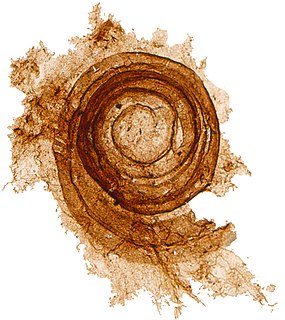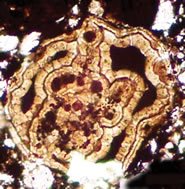
Morocco, officially the Kingdom of Morocco, is the northwesternmost country in the Maghreb region of North Africa. It overlooks the Mediterranean Sea to the north and the Atlantic Ocean to the west, and has land borders with Algeria to the east, and the disputed territory of Western Sahara to the south. Morocco also claims the Spanish exclaves of Ceuta, Melilla and Peñón de Vélez de la Gomera, and several small Spanish-controlled islands off its coast. It spans an area of 446,300 km2 (172,300 sq mi) or 710,850 km2 (274,460 sq mi), with a population of roughly 37 million. Its official and predominant religion is Islam, and the official languages are Arabic and Berber; the Moroccan dialect of Arabic and French are also widely spoken. Moroccan identity and culture is a vibrant mix of Berber, Arab, and European cultures. Its capital is Rabat, while its largest city is Casablanca.

The Atlas Mountains are a mountain range in the Maghreb in North Africa. It separates the Mediterranean and Atlantic coastlines from the Sahara Desert. It stretches around 2,500 km (1,600 mi) through Morocco, Algeria and Tunisia. The range's highest peak is Toubkal, which is in central Morocco, with an elevation of 4,167 metres (13,671 ft). The Atlas mountains are primarily inhabited by Berber populations. The terms for 'mountain' are adrar and adras in some Berber languages. These terms are believed to be cognates of the toponym Atlas. The mountains are also home to a number of animals and plants which are mostly found within Africa but some of which can be found in Europe. Many of these species are endangered and a few are already extinct. The weather is cooling but has sunny summers, and the average temperature there is 25°C.

Acritarchs are organic microfossils, known from approximately 1800 million years ago to the present. The classification is a catch all term used to refer to any organic microfossils that cannot be assigned to other groups. Their diversity reflects major ecological events such as the appearance of predation and the Cambrian explosion.

Palynology is literally the "study of dust" or of "particles that are strewn". A classic palynologist analyses particulate samples collected from the air, from water, or from deposits including sediments of any age. The condition and identification of those particles, organic and inorganic, give the palynologist clues to the life, environment, and energetic conditions that produced them.

A microfossil is a fossil that is generally between 0.001 mm and 1 mm in size, the visual study of which requires the use of light or electron microscopy. A fossil which can be studied with the naked eye or low-powered magnification, such as a hand lens, is referred to as a macrofossil.

Vernanimalcula guizhouena is an acritarch dating from 600 to 580 million years ago; it was between 0.1 and 0.2 mm across. Vernanimalcula means "small spring animal", referring to its appearance in the fossil record at the end of the Marinoan Glaciation and the belief upon discovery it was an animal.
Leiosphaeridia is a form-genus of acritarchs proposed by Eisenack in 1958. The grouping was refined to represent a more natural group by Jankauskas.

Hamadasuchus is an extinct genus of sebecian crocodylomorph. Fossils have been found from the Kem Kem Formation outcropping in southeastern Morocco. These beds date back to the Albian and Cenomanian stages of the Late Cretaceous. It was first assigned to the family Trematochampsidae. Diagnostic features of the genus include its lateromedially compressed and serrated teeth. It was deep-snouted and had a slightly heterodont dentition with three distinct tooth morphologies present from sections of the lower jaw.

The Great Estuarine Group is a sequence of rocks which outcrop around the coast of the West Highlands of Scotland. Laid down in the Hebrides Basin during the middle Jurassic, they are the rough time equivalent of the Inferior and Great Oolite Groups found in southern England.

Small carbonaceous fossils (SCFs) are sub-millimetric organic remains of organisms preserved in sedimentary strata.
Alfred Eisenack was a German paleontologist. He was a pioneer of micropaleontology and palynology. His botanical and mycological author abbreviation is "Eisenack".
The Dracoisen Formation is a geologic formation found on the islands of Spitsbergen and Nordaustlandet in Svalbard, Norway. It is Ediacaran in age. Microfossils have been found, including Bavinella faveolata and rare acritarchs.
Granomarginata is a genus of spherical Cambrian acritarchs interpreted as a phytoplankton.
Pterospathodus is an extinct genus of conodont from the Silurian period.
Cheleutochroa is an extinct genus of acritarchs from the Ordovician.

The Læså Formation is a lower Cambrian unit exposed on the Baltic island Bornholm, comprising two members: the lower, the Broens Odde Member, colloquially and previously informally termed "green shales", a 100 m thick glauconitic silt-sandstone occasionally bearing extremely acritarch-rich phosphatic pebbles; gradually transitioning upwards into the upper, the 3 m thick Rispebjerg Member, a sandstone.

The COVID-19 pandemic in Morocco is part of the worldwide pandemic of coronavirus disease 2019 caused by severe acute respiratory syndrome coronavirus 2. The virus was confirmed to have spread to Morocco on 2 March 2020, when the first case COVID-19 case was confirmed in Casablanca. It involved a Moroccan expatriate residing in Bergamo, Italy, who arrived from Italy on 27 February. A second case was confirmed later that same day involving an 89-year-old woman Moroccan residing in Italy who had returned to Morocco on 25 February from Bologna, Italy. As the outbreak widened in Morocco, in mid-March the Government closed schools and suspended international passenger flights.
Araiochelys is an extinct genus of bothremydid pleurodiran turtle that was discovered in the Ouled Abdoun Basin, Morocco. The genus consists solely of type species B. hirayamai.
Phosphatochelys is an extinct genus of bothremydid pleurodiran turtle that was discovered near Oued Zem, Morocco. The genus consists solely of type species P. tedfordi.
Rhonthonemies is an extinct genus of bothremydid pleurodiran turtle that was discovered in Morocco. The genus consists solely of type species R. brinkmani.










